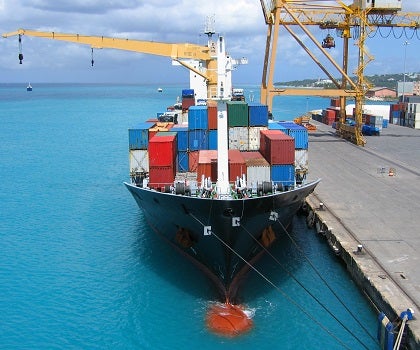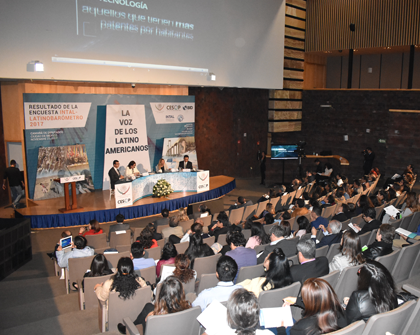The infrastructure gap is one of the biggest obstacles to Latin America increasing its productivity. The region invests just 3% of its gross domestic product (GDP) in areas that are fundamental for efficiency and external competitiveness, such as transportation, energy, and communications. This is half as much as OECD countries invest.
Logistics costs represent 8% of the final product for a European SME, while in Latin America these could amount to 40% or more. For perishable products, each additional day of delay reduces exports by 7%.
Are Latin Americans aware of the role that infrastructure plays in economic development? Some 43% of the population acknowledges it to be an important issue. This awareness is highest in Uruguay (50%), Costa Rica (49%), and Argentina (48%).
The Importance of Infrastructure for Development
- Which of the following topics play the biggest role in development in your country? Answers for transportation, water, energy, and sanitation infrastructure.
Source: INTAL based on Latinobarómetro 2016 data.
Acknowledging the importance of a problem does not necessarily imply a willingness to take on the cost of tackling it. Willingness to pay to improve infrastructure in Latin America remains low. The regional average of 3.8 points on a scale of 1 to 10 has not changed since 2015. With an average of 2.9, Brazil was the country that showed least willingness to do so, while Nicaragua, with 5.2, was the most willing.
Willingness to Pay Higher Taxes and/or Take on Debt to Finance Infrastructure
- On a scale of 1 to 10, where 1 is “not at all willing” and 10 is “totally willing,” how willing are you to pay higher taxes or for your country to take on debt to finance infrastructure works that will facilitate integration?
Source: INTAL based on Latinobarómetro 2016 data. *Note: no data for Mexico 2015.
Limited willingness to pay for infrastructure does not imply that people do not acknowledge the importance of infrastructure for development. Other factors could also explain it, such as a deteriorating social situation or the belief that “someone else” (usually the state) should pay for infrastructure without this implying higher taxes in the present or the future.
Infrastructure for Competitiveness
The dialogue between subjective and objective data proposed in The DNA of Integration allows us to compare willingness to pay for infrastructure with different variables. One of these is the World Bank Competitiveness Ranking, which shows a negative correlation of -0.35. In other words, the least competitive countries are the most willing to pay for improving competitiveness-related infrastructure. This result is significant as the least competitive countries are those that are demanding more infrastructure and are also more willing to make the necessary effort to obtain this. Countries such as Chile and Panama, where infrastructure is a fundamental part of the economy due to the openness of their markets, are exceptions to this rule, in that inhabitants are highly willing to pay for improvements even though they already have high-quality infrastructure. If these two countries are taken out of the equation, the negative correlation among the remaining 16 goes from -0.35 to -0.52.
Willingness to Pay Higher Taxes and/or Take on Debt to Finance Infrastructure and Competitiveness Ranking
Source: INTAL based on Latinobarómetro 2016 data.
In addition to improving external competitiveness, transportation and communications infrastructure is a major source of revenue for national economies. A comparison of the importance people place on infrastructure with the revenue this brings per inhabitant reveals a positive correlation of 0.49.
Perception of the Importance of Infrastructure and Its Contribution to the Economic Sector
Countries that place greater importance on infrastructure also tend to receive higher revenues from the sector in question. This is the case in Uruguay, where 50% of the population said they acknowledge the importance of infrastructure for development and where the development sector reports receiving almost US$1,000 per inhabitant. At the other extreme, Honduras is the country that places the least importance on infrastructure and is where development revenue per inhabitant is as low as US$165.
In other words, internal and external factors converge to determine the importance people place on infrastructure and their willingness to pay to improve this.
(Extract from the Technical Note The DNA of Regional Integration)









